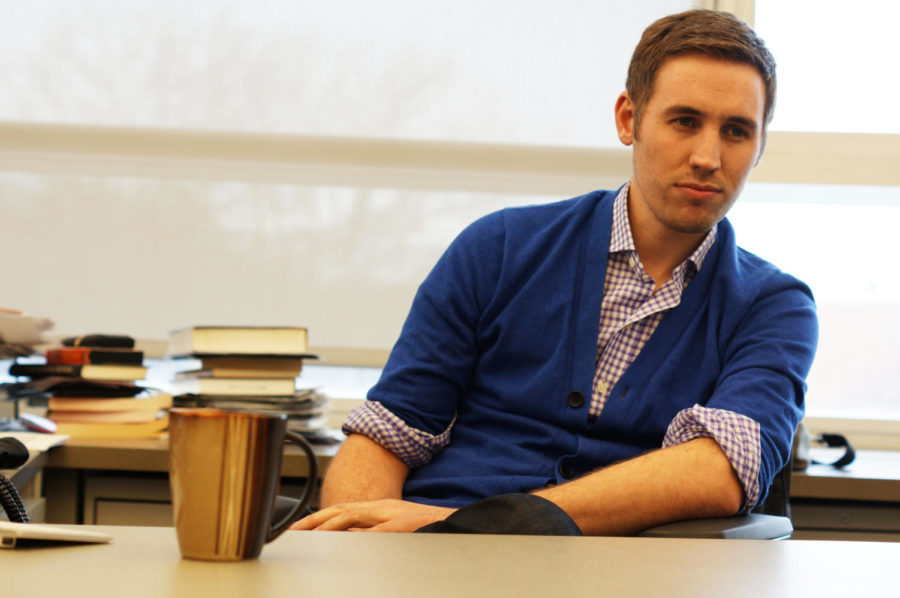Arthur Winter receives RCSA Cottrell Award
Photo: Jessica Langr/Iowa State Daily
Arthur Winter, assistant professor at Iowa State and 2013 Cottrell Scholar, talks about the new advances in bioimaging and potential applications for it on March 6, 2013 in his office in Hach Hall. “It’s come a long way from where it started,” he said.
March 14, 2013
Iowa State’s own Arthur Winter, assistant professor of chemistry and head of the Arthur Winter Laboratory, has recently received the Cottrell Award from the Research Corporation for Science Advancement for his excellence in teaching and research.
His recognition as a Cottrell Scholar is “essentially an award that you apply for in your third year after you’re given a faculty appointment, and it’s a one-shot deal where you either get it or you don’t,” Winter said.
The award is one that is “a really prestigious and high-visibility award for him,” said Emily Smith, assistant professor of chemistry as well as a research collaborator with Winter.
The Cottrell Scholar award is unlike many awards bestowed upon professors.
The award is “a little bit different because it also includes a teaching component, whereas most just include research, so it’s a little different in that respect,” Winter said.
In regard to teaching and education, Winter recently finished revising “Pushing Electrons,” an organic chemistry workbook designed to offer supplementary practice and learning, albeit one that is not required for students.
Winter said it is a workbook written by Daniel Lee.
“Basically, he retired decades ago, and the book has never been updated, and it’s a text everyone loves, but it just hadn’t been updated in decades. So I ended up being the editor on a new edition that actually just came out,” Winter said.
Furthermore, Winter and his research group have stayed busy in his research, most notably regarding bioimaging, which played a key role in garnering recognition from the Research Corporation for Science Advancement.
“Essentially, bioimaging is a way of looking at molecules in a cell using some sort of microscopy. So, what we’re interested in doing is using fluorescence microscopy,” Winter said.
He compares the process to the effect a black light has.
“Our proposal is related to making probes that can follow biomolecules in real time, more like a movie, rather than a snapshot picture,” Winter said. “So, with most probes now, you basically can get the snapshot picture of where biomolecules are at a given time, but you can’t get the real-time imaging.”
Plenty of research remains on the horizon for Winter’s group before much substantiality, at least from a public perspective, can arise.
“Right now, it’s a fundamental project. This involves getting fundamental information about what can be done and how it can be achieved, how it’s going to be accomplished,” Smith said.
In terms of a timetable for future developments into Winter’s bioimaging research, Smith predicts it will be three to six months before experiments begin, and up to a year before results are ready to be shared with the scientific community.







